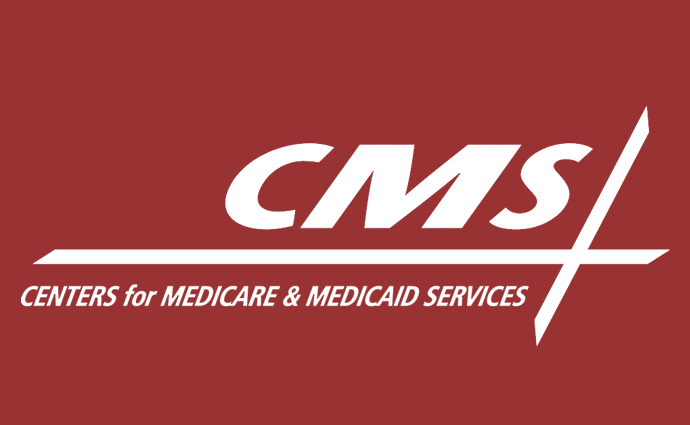CMS Seeks Electronic Prior Authorization for Medicare Part D Drugs
A proposed rule would implement a new electronic prior authorization standard that would enable real-time medication decisions for Medicare Part D drugs.

Source: Xtelligent Healthcare Media
- CMS recently issued a proposed rule that aims to significantly reduce provider burden by implementing electronic prior authorization for medications prescribed through Medicare Part D.
Specifically, the rule would implement new prior authorization transaction standards for the Part D e-Prescribing program, which all Medicare Part D plans would have to support by January 2021.
“Improving patients’ access to prescription drugs is a top priority for CMS,” CMS Administrator Seema Verma stated in the proposed rule’s announcement. “This proposed rule would reduce the time it takes for a patient to receive needed medications and ease the prescriber burden by giving clinicians the flexibility and choice to complete prior authorization transactions electronically.”
Prior authorizations are a major pain point for providers. A recent survey conducted by the American Medical Association (AMA) found that 86 percent of physicians feel that the burden of prior authorizations is high or extremely high, and 88 percent report that the burden has only increased in the recent past.
Manual processes exacerbate provider burdens associated with prior authorizations. Eighty-eight percent of prior authorizations are either partially or completely done manually, CAQH’s Committee on Operating Rules for Information Exchange (CORE) recently reported.
READ MORE: How Advocate Aurora Health Streamlined Prior Authorizations
Manual prior authorizations have been a particular issue for medication requests under Part D plans. The adoption of new electronic prior authorization standards aims to eliminate “the current system of manual processing (fax and phone calls),” CMS explained in the proposed rule.
The proposed rule would also resolve issues with implementing electronic prior authorizations for medications, the federal agency stated.
Under the Part D e-Prescribing program, CMS has been attempting to automate prior authorizations for Medicare Part D services. However, the current standard required under HIPAA (X12 278) has not be adequate for medication prior authorization requests, which has limited the ability of providers and plans to conduct real-time e-prescribing.
In particular, CMS identified gaps in the standard, including “no mechanism for providers to request and explain reasons for deviating from standard medication dosing instructions, requiring certain fields that are not applicable to drugs, and no limit on diagnosis codes, which required clinicians to select from hundreds of options to find the appropriate code.”
Previous stakeholders feedback also revealed that the standard was unable to support attachments for prior authorization determinations, incorporate free text in specific fields, and enable functionality for real-time messaging.
READ MORE: 3 Strategies to Minimize the Burden of Prior Authorizations
With the authority from the SUPPORT for Patients and Communities Act of 2018, CMS is now able to adopt a different electronic prior authorization standard that may not comply with HIPAA’s standard requirement but will align with effective medication prior authorization processes.
The rule would require Part D plan sponsors to support version 2017071 of the National Council for Prescription Drug Programs (NCPDP) SCRIPT standard for use in electronic Prior Authorization (ePA) transactions.
“The NCPDP SCRIPT Standard was designed to support medication ePA, the standard also supports features that minimize what the prescriber is asked, creating a customized experience based on earlier answers or data pulled using automated functions from their EHR system, which would reduce the amount of time a prescriber or their staff spend reviewing and responding to the PA questions,” CMS stated in the proposed rule.
“We understand that this functionality works with most EHR systems, and can be customized based on what information is requested by the plans,” the agency continued. “It additionally supports software functions that allow for automation of the collection of data required for ePA consideration from data available within most EHR systems or other PA transaction fields.”
The new standard also supports solicited and unsolicited prior authorization models unlike the old standard.
READ MORE: Payer, Provider Dialogue Key to Prior Authorization Reform
The proposed rule would only apply electronic prior authorization standards within the Medicare Part D context. But the rule is a big step for automating the cumbersome process.
Industry leaders have been increasing their prior authorization reform advocacy efforts as of late. Industry groups including CAQH CORE and the Workgroup for Electronic Data Interchange (WEDI) have also recently created new rules and committees to support prior authorization automation.
However, progress has been slow. In March 2019, the AMA specifically called out health payers for their lack of meaningful progress with prior authorization improvements. The association revealed that phone and fax were still the primary methods for completing prior authorizations and only 21 percent of physicians said their EHR systems support electronic prior authorizations for prescription drugs.
“Physicians follow insurance protocols for prior authorization that require faxing recurring paperwork, multiple phone calls and hours spent on hold. At the same time, patients’ lives can hang in the balance until health plans decide if needed care will qualify for insurance coverage,” said Barbara L. McAneny, MD, former AMA president.
“In previously released AMA survey results, more than a quarter of physicians reported that insurers’ extended business decision-making process led to serious adverse events for waiting patients, such as a hospitalization or disability. The time is now to fix prior authorization.”
